An arresting sight! The sporty classic loved by police
and live on Freeview channel 276
While many officers in the swinging 60’s were handed the keys to a lumbering Wolseley or a Triumph Herald – others were rather luckier.
This 1960 MGA Roadster, on display at the Lakeland Motor Museum in Cumbria, was one of around 50 supplied to the Lancashire Constabulary for traffic patrol duties around the county. It’s thought they were almost exclusively driven by female police officers.
Advertisement
Hide AdAdvertisement
Hide AdThe engine was known to be somewhat temperamental. But the vehicles could go from 0-60mph in 12.2 seconds – reasonably quick for that era and good enough to keep in touch with many a lawbreaking motorist.
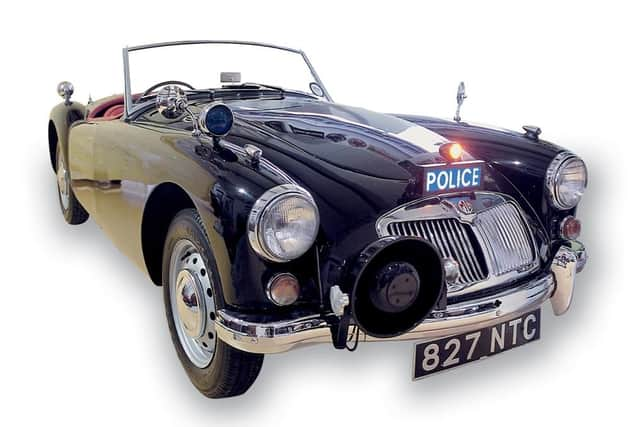

The top speed was 110 mph. Fuel consumption was only 27 miles per gallon. But any officer lucky enough to go out on patrol in one of these probably didn’t really care too much about that.
For an insight into those times - there’s even a rare photo of this exact vehicle in action with the Lancashire Constabulary. This image was taken on the A6 Preston to Lancaster Road, near Forton, in Lancashire.
It was supplied to The Lakeland Motor Museum by Glen Fairweather when he discovered it in a collection of slides he bought at an auction over in America.
Advertisement
Hide AdAdvertisement
Hide AdIt was perhaps once a holiday snap captured by an American tourist. But now it’s a wonderful window into times long since passed.
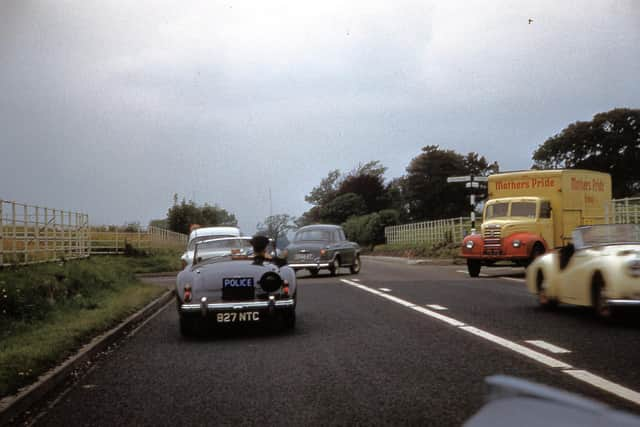

In Lancashire, the MGA Roadster police cars were divided into white (A Class) and black (B Class) contingents.
They had uprated running gear that was similar to the 1600 Deluxe model but with drum rear brakes instead of discs and bolt on steel wheels.
The Lakeland Motor Museum’s vehicle has two uniformed mannequins aboard and offers a lovely reminder of a time when roads were perhaps a little less crowded – and even police patrols had a touch of style!
Advertisement
Hide AdAdvertisement
Hide AdThe MGA has a long heritage. Cecil Kimber constructed the first MG car in 1923 using a Morris Oxford chassis.
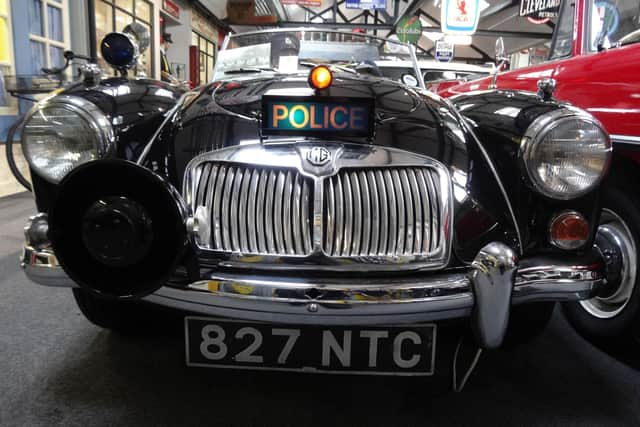

The MGA replaced the T-type cars and was first launched at the Frankfurt Motor Show in 1955.
The first vehicles were powered by a 1489cc twin carb engine with 72bhp.
They were updated for 1958 as the MGA 1600 with a larger 1588cc 80bhp engine plus front disc brakes.
Advertisement
Hide AdAdvertisement
Hide AdThe MGA 1600 Deluxe is a rare variant with a competition suspension, discs brakes all round and knock off wheel hubs with pin drive steel wheels.
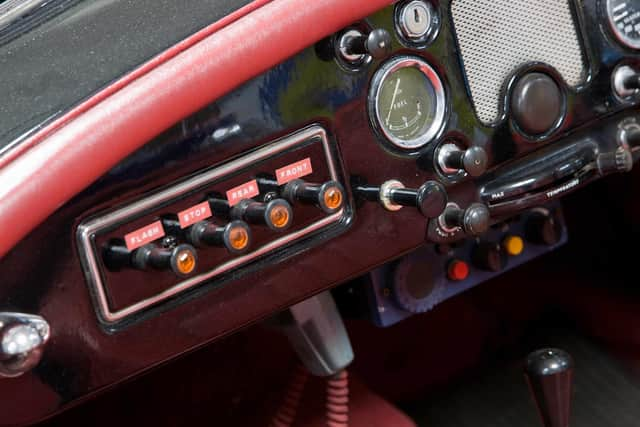

It was ultimately replaced with the MGB in 1962 after a production run of just over 100,000 units.
The majority were exported with only around 6,000 supplied to the home market.
Several police forces around the country are thought to have employed them.
Advertisement
Hide AdAdvertisement
Hide AdIn May 1959 the standard cars also received an updated engine, now at 1588 cc producing 79.5 bhp (59 kW; 81 PS) . At the front disc brakes were fitted, but drums remained in the rear.
31,501 were produced in less than three years.
Externally the car is very similar to the 1500 with differences including: amber or white (depending on market) front turn indicators shared with white parking lamps, separate stop/tail and turn lamps in the rear, and 1600 badging on the boot and the cowl.
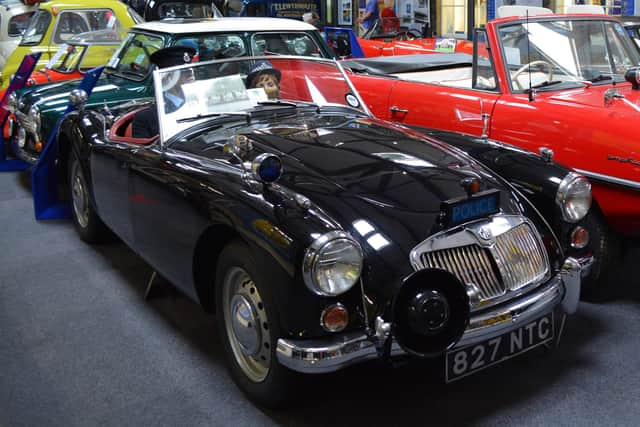

A number of 1600 De Luxe versions were produced with leftover special wheels and four-wheel disc brakes of the departed Twin-Cam, or using complete modified Twin-cam chassis left redundant by the discontinuance of that model. Seventy roadsters and 12 coupés were built.
Lancashire Constabulary is generally credited with being the first police force to use panda cars in 1965.
The constabulary was a big user of the Anglia.
Advertisement
Hide AdAdvertisement
Hide AdOnce it had been decided to switch officers to mobile patrols, Lancashire Constabulary bought 175 Ford Anglia’s, made at Halewood on Merseyside, in one go.
Then acting chief constable Bill Palfrey staged a media event at County Police Headquarters at Hutton on May Day 1967, by having them arranged in ‘999’ formation.
The police vehicles were the ‘basic’ Ford Anglia's, lacking the full-width chrome-plated radiator grille of the deluxe model.
The Ford Anglia’s were originally dubbed ‘A’ cars, but became known as Pandas because of the white stripe on their bodywork which contrasted with their main lagoon blue colour.
Advertisement
Hide AdAdvertisement
Hide Ad"Their introduction’ Palfrey said, ‘would save the force some 400 men.”
At the time Lancashire Constabulary was some 500 officers under strength anyway, and it was this strain on manpower that was a big influence in the departure from old style policing.
In January 1970, at the opening of a new control centre in Hutton that was capable of supervising 1000 mobile units at any one time, Palfrey said: “People who argue for a return to foot patrols are living in the past, in a bygone age. A lot is talked about policemen riding around in cars. Should the criminal cease to use high-powered cars, then we could return to foot patrol.”
The Lakeland Motor Museum houses a fascinating collection of over 30,000 exhibits that trace the development of road transport throughout the twentieth century - cycles, motorbikes, motor cars and automobilia.
Advertisement
Hide AdAdvertisement
Hide AdHoused in a converted mill in the heart of the Lake District, just minutes from Windermere, it’s more than just a motor museum, with local history and period shopping displays, authentic recreations and picturesque riverside cafe making it a great day out for the whole family.
Thanks to british-police-history.uk for the information about Lancashire Constabulary cars.